There has been a lot of speculation on what DJI’s next move will be. Will their next consumer drone be a Phantom 5? Will it be a Mavic 2? Will they downgrade the Mavic Pro and release a more affordable Mavic Standard?
It seems that the next release from DJI may be none of those – it may be a completely new smaller drone. There are plenty of leaked photos of the upcoming DJI Spark, but no one has developed a CAD model like we have. Read on for more detailed insights and Spark predictions than any other site! Or watch below.
Half Chrome is also the only source for a complete 3D CAD model of what we think the DJI Spark might look like. You can find leaked pictures on other sites but we went the extra mile to give you a complete picture of what might be DJI’s next drone. You can read more about the 3D CAD here, or download the file using the button below. Click once to add it to your cart and a second time to check out. The download is yours for free! Go ahead and 3D print your own, we did.
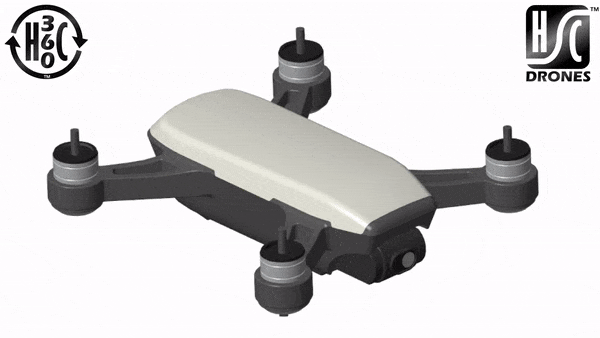
What is the Spark?
Recently DJI filed a trademark for “Spark,” which seems like a name perfectly well suited for the small selfie-like drone from the leaked photos we’ve seen. The Spark is small, about 6″ x 6″, and it doesn’t look to have moveable arms. What’s up with no folding arms on a selfie drone? Later in the article, we will discuss why fixed arms might actually be a good thing.
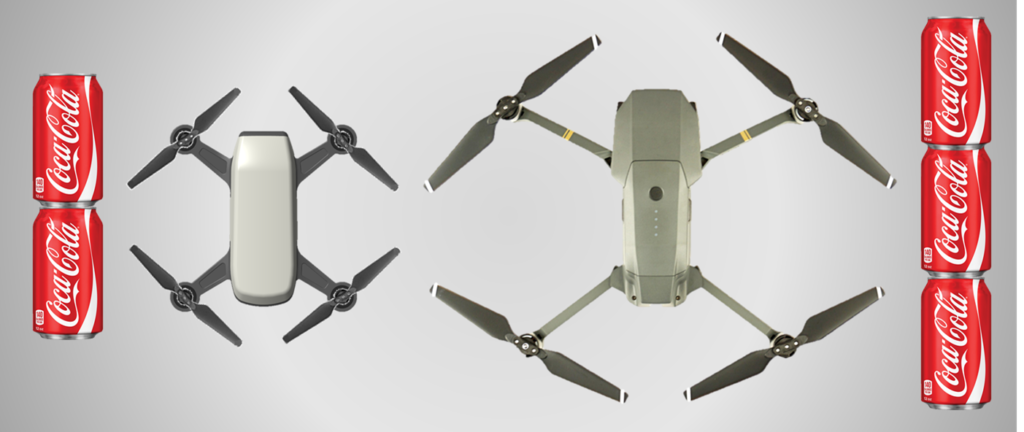
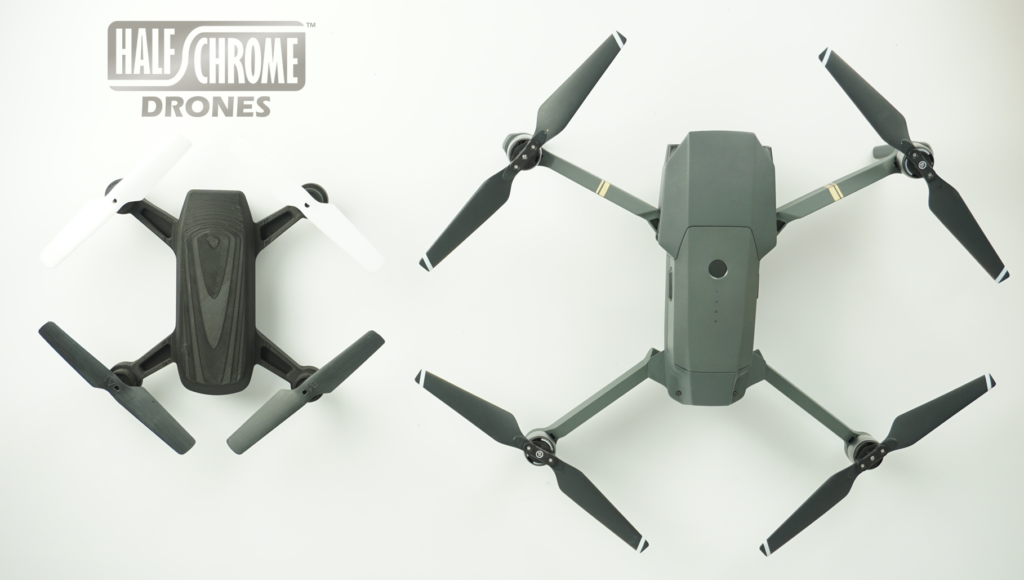
What’s so Special About THIS Drone?
One thing that looks to set this selfie drone apart from the rest is that it has a gimbal. The Dobbie and the Yuneec Breeze are good selfie drones, but they lack mechanical gimbals. Adding a gimbal to a selfie drone is a major upgrade. And that is what DJI does – they continually raise the bar.
This gimbal appears to be just a two-axis gimbal, which isn’t a big deal since drones tend to be stable in yaw, even in light wind. Given the gimbal design, we think it might have a hidden feature. With the camera so close to the ground, wouldn’t it be cool if it rotated to a stowed position right before it touched down for landing? We think the camera will pivot to look into the drone itself at final approach.
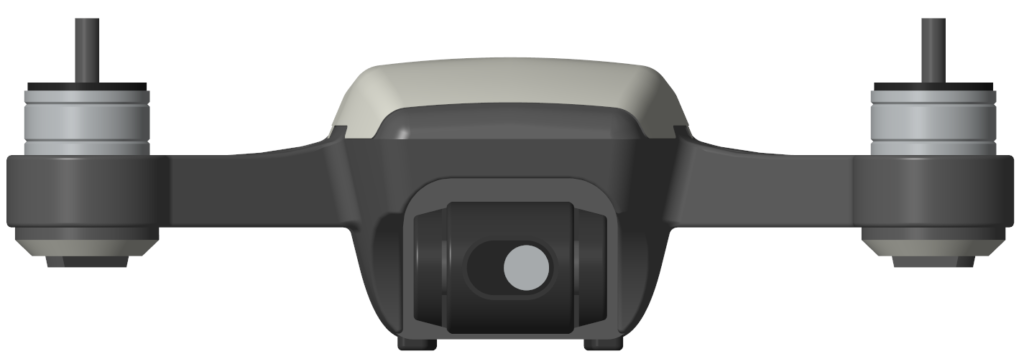
You can also see there are the sonar and camera sensors on the bottom of the Spark. DJI builds some of the most stable drones on the market and the Spark looks to fall into line with that. It is very likely that you won’t have to remove the battery to charge the Spark. The photos suggest that the drone can be charged via a USB cable or perhaps by using the quick charging contacts shown on the bottom of the drone.
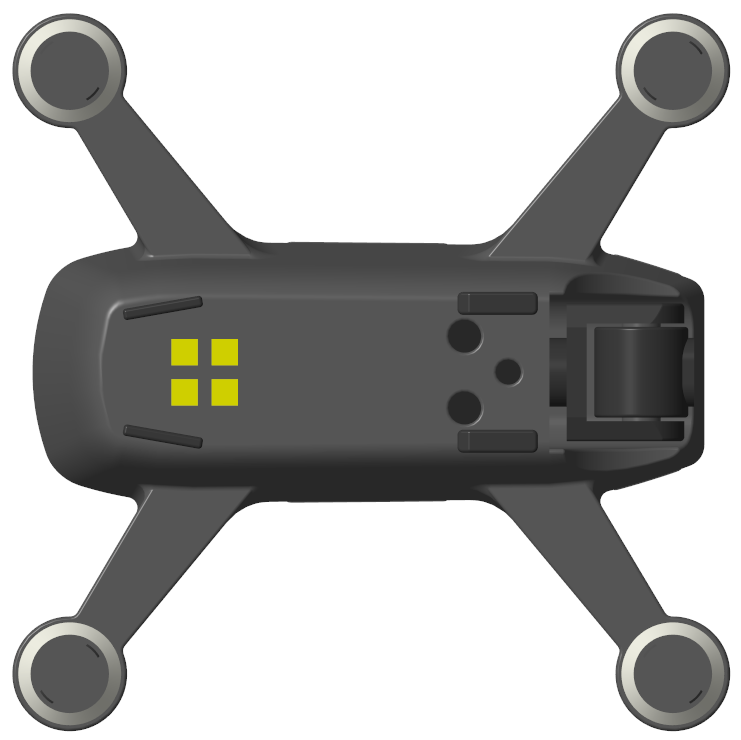
Is that enough?
At Half Chrome we don’t think DJI would release a new drone without some real game-changing new feature. The quick-charging contacts give us a clue as to what that feature might be. We believe that a selling point for this drone will be ease-of-use. We expect a key selling point for the Spark to be that you can get it up in the air faster than any other drone in the DJI portfolio. But what does that mean in practical terms?
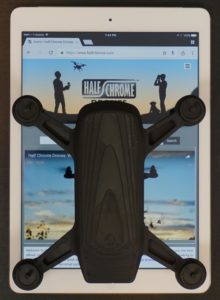
We think the Spark will come with a carrying case that will double as a charging station and a launch pad. Imagine opening up a small case and being in the air in a few seconds. That’s something that no drone in the DJI lineup can do. Even the Mavic requires some setup time for unfolding the arms and plugging in a phone to the remote controller. With the Spark, there is no need to even change the battery in many situations. Just put the drone in the case and let the case’s internal battery charge the drone for you. The carrying case might be capable of recharging the drone up to 3 times.
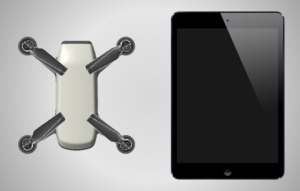
That launch pad could have unique visual features that the Spark can recognize, making the Spark the first consumer drone that can land within a fraction of an inch from where it took off.
It would also be reasonable to expect the Spark to be able to shoot 4K video, a rare feature in drones this small. While the Hover Camera can shoot in 4K, we expect that the Spark’s camera will outperform the Hover by no small margin. The Spark will surely have GPS and some advanced flight modes like Follow Me, Orbit, Return Home and some Selfie modes as well.
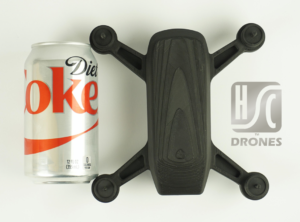
We anticipate a “Quick Selfie” mode, where the drone launches largely autonomously to a fixed distance and height for a few pictures or a short video. In some flight modes, the drone may even be capable of intelligent return-to-home, where it follows the same path back to the launch pad that it took to capture the selfie.
How about Obstacle Avoidance?
The latest leaked photos suggest a place for at least two optical avoidance sensors on the Spark, positioned above the main camera. The sensors are shrouded behind tinted glass or plastic. Tinted glass suggests that DJI is planning on expanding the role of IR-based (infrared-based) sensors, which first appeared on the sides of the Phantom 4 Pro. We think they may be putting as many as 4 sensors there in order to cover a more broad area and better simulate the quality of obstacle avoidance you get with more expensive and processor-hungry cameras.
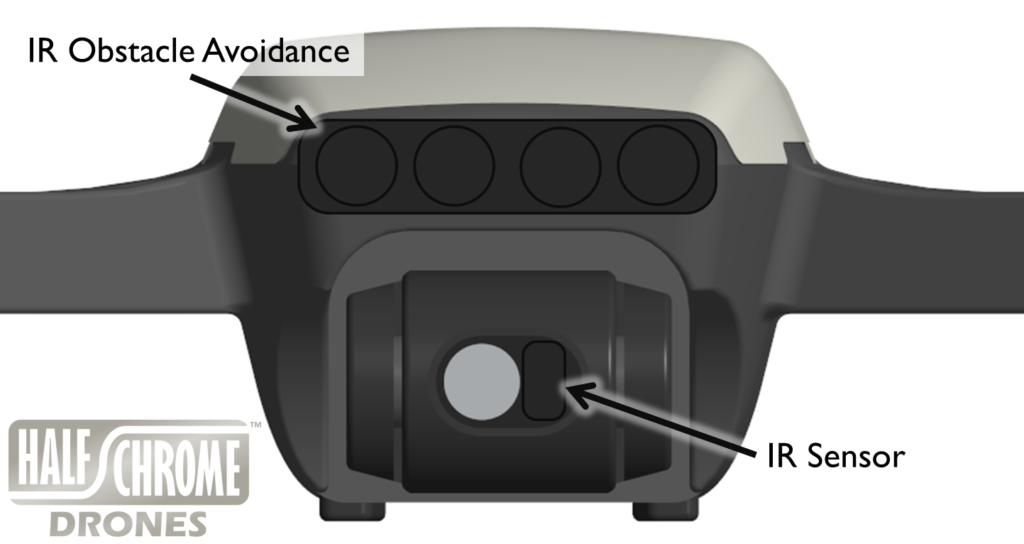
What Else is Hiding Next to the Primary Camera?
That would be another IR sensor. At least we think so. Why would you put a sensor on the gimbal next to the camera? It could be there for two reasons. First, for faster or better autofocus. Some cell phone makers like LG and HTC have been putting these sensors on smartphones for the last couple years to speed up the time it takes to achieve autofocus.
We don’t think that’s it’s primary purpose, however. We think it is likely another obstacle avoidance sensor. When this drone is flying fast, which it will be able to do, it will be pitched forward. The DJI spark will likely have obstacle avoidance on-gimbal to see what’s ahead when the drone is flying fast. So that begs the question…
Can it Race?
You can race almost anything, so of course, you can race a DJI Spark. It may not be as crazy as it sounds. Many racing rigs also cost hundreds of dollars, and they don’t have obstacle avoidance. What’s the other hint that DJI may be hoping people fly fast with this drone? The arms of the drone look super strong and they are completely integral to the frame. While Phantoms have hollow plastic arms, and the Mavic arms would likely snap off in a high-speed impact, the Sparks arms look to be built for abuse.
So is it just a Selfie Drone?
With all that this drone can likely do, we think it may actually be a disservice to call it a selfie drone. If the drone really doesn’t have folding arms then it is much more likely to be marketed as an affordable high-performance all-around drone to compete with drones like the Parrot Bebop. “Compete” may not be a fair term, Parrot likely doesn’t stand a chance.

Currently, the only drones in the DJI lineup that won’t set you back close to four figures are Phantoms, which are pretty large and heavy in they eyes of many consumers. We expect this drone to be launched at a price under $500 and for it to be close to the weight threshold where the FAA requires registration. It could be a big selling point in the US if DJI can keep the weight under 0.55 pounds.

Spark Wrap-Up
Here are the official Half Chrome predictions for what the Spark will do that no other DJI drone has done before. We are 90% sure that 80% of these are correct. You won’t find a list this complete on any other site.
- 2-Axis Gimbal
- The gimbal will go into a “stowed” orientation by spinning the camera about the pitch axis until the lens is facing into the body of the drone.
- Cordless charging
- An optional charging case with at least 2 charges stored in an in-case battery
- The shortest time to get your drone air. We’ll put the over-under at 30 seconds.
- The most impact-resistant DJI drone available
- IR forward obstacle avoidance
- On-gimbal forward obstacle avoidance
And some other guesses about this drone based on DJI’s track record:
- We expect 4K video quality and 20-megapixel stills
- Top speed of 40 mph
- Flight time of 15-25 minutes
- Compatibility with the Mavic remote
- Compatibility with DJI’s latest accessories including the VR headset
So What’s Really Next for DJI?
We are expecting DJI to announce a new drone this April. If we had to guess, we would expect to see DJI release their next drones in this order.
- Mavic Standard: There are rumors that DJI is going to release an inexpensive version of the Mavic, very similar to the Phantom 3 Standard release, which came after the release of the Phantom 3 Pro. Learn more here.
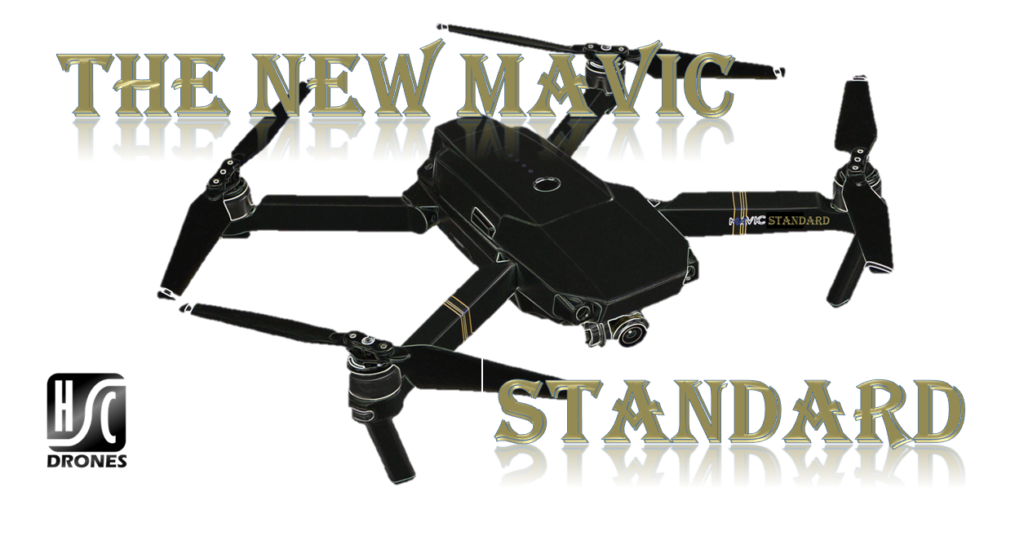 The DJI Mavic Standard
The DJI Mavic Standard - Spark: Is it a selfie drone or an entry level drone? Reread above if your interest has been “sparked.”
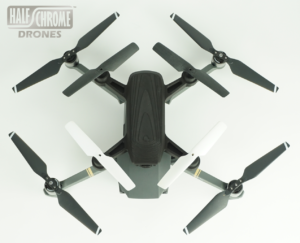
DJI Spark on top of a Mavic - Phantom 5: The next generation of the Phantom is going to be spectacular. Read here to see what could be coming.
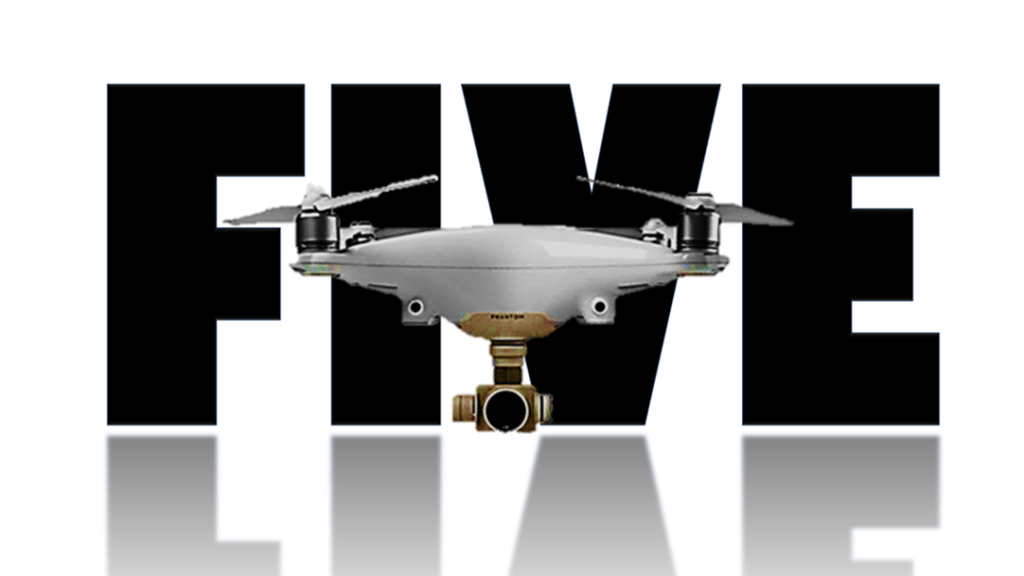 The DJI Phantom 5
The DJI Phantom 5 - Mavic 2: The Mavic Pro is an awesome drone, but it could use some improvements like these.
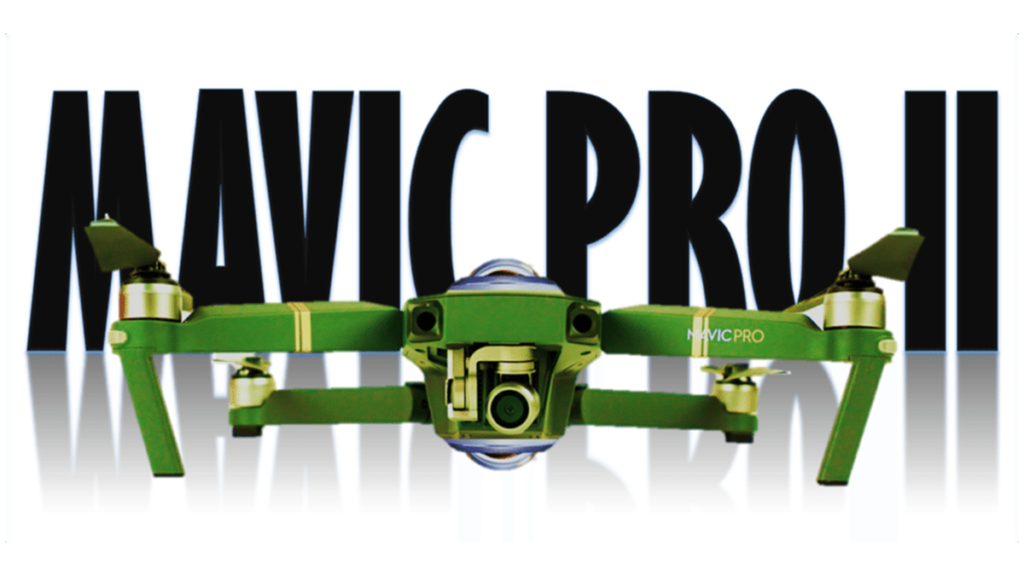 Mavic Pro 2
Mavic Pro 2
About the Author
Chris is our resident drone geek and holder of a part 107 commercial drone license. He has 14 years of experience as an engineer in the aerospace and consumer electronics industries. He has been a lead designer for several cameras, including “normal” visible spectrum cameras, IR cameras and multi-spectral sensing systems. Chris is in a unique position to make some educated guesses on what the Spark will include.
Disclosure:
This website contains affiliate links, which means we receive a commission if you make a purchase using these links. For full details visit the disclosures and disclaimers page.
- Beginner
- Discounts
- Wedding
- Youth


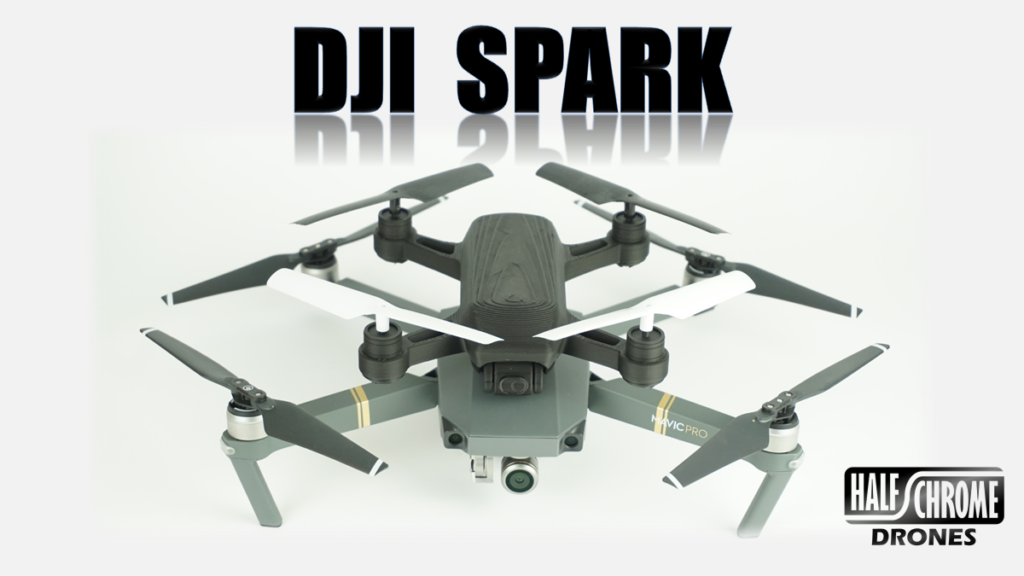















Pingback: The New DJI Spark: The Drone for Everyone | Half Chrome Drones